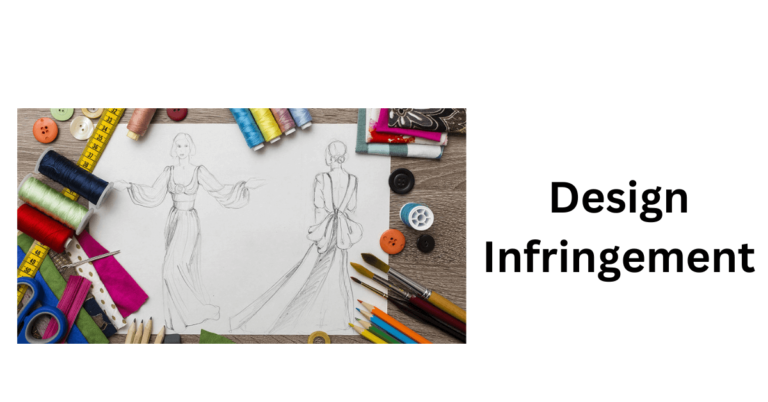A ‘design’ registration is awarded in India based on the aesthetic appeal of a product or article. A design does not impact or contribute to the functionality of a product; it is provided for decorative value alone. Due to the absence of a strict verification system, design infringement has become rampant in India. Take an example of a well-known footwear brand ‘CROCS’ famous for their footwear, each pair having 13 holes on the top of the shoe. Although they have registered the design of their footwear, you will still find many local shops in your area selling CROCS shoes despite the fact that they have registered the design of their footwear.
Designs Act, 2000
The Indian Design Act has been enacted to protect the rights of design holders in India. In common law nations such as the United States and the United Kingdom, patents and designs are governed by the same statute. Similarly, the Indian Patent & Design Act was enacted in 1911 to encompass both patents and designs. The term ‘Design’ under Design Act, 2000, is defined as “the features of shape, any pattern, configuration, ornament or composition of colors or lines which is applied to 2 dimensional or 3 dimensional or in both the forms using any procedure or process including manual, mechanical, or chemical, combined or separate which in the finished or final article appeals to or is judged solely by the eyes.”
Essential requirement for design protection
- The design must be original or novel
- A design should not have been disclosed to the public in advance
- A design must be distinguishable from all other known designs or combinations
Rights of Design Holder in India
When a design is registered under the Act, the registered proprietor is granted 10 years of copyright protection. The proprietor’s rights are comparable to those of the owner of copyright, which includes the exclusive right to apply the registered design to the particular class of articles. The Act also permits the registered owner to grant a license for a charge. Several exclusive rights are obtained:
- The exclusive right extends to any registered design for a product.
- The exclusive right to disclose or publish granted to items for which the design has already been registered.
- The registered design must own the sole right to import for any commercial purpose.
Design Infringement
The unauthorized copying of an existing registered design is considered as design infringement. The section 22 of the Design Act talks about the design infringement, it says that any false or apparent imitation of a registered design without the authorization of the registered design’s owner or proprietor is illegal. Additionally, the section restricts the importation of any chemical or material that closely resembles a registered design.
In simpler terms, when someone else imports, applies, or publishes the registered design, or any evident, fraudulent, or imitation thereof, without the owner’s permission, that’s called an infringement of the registered design.
In the case of Troika Pharmaceuticals v. Pro Laboratories, the Gujarat High Court ruled in favour of the plaintiff because they were the registered owners of ‘D’ shaped tablets, which was a protected design. The defendants began manufacturing identical tablets on the grounds that the design was common and did not merit protection. Even if the “D”-shaped design was not innovative, the Court found that its use in tablets was novel and hence entitled to protection under the Designs Act.
The court ruled in Kemp & Co. v. Prima Plastics Limited that “If the visual characteristics of shape, configuration, and pattern designs are comparable or stringently similar to the eye, it is not required that the two designs be identical. The issue must be viewed as one of substance, and fundamental design elements must be evaluated.”
Remedies for design infringement
Section 22(2) (a) & (2) (b) of the Design Act discusses on the liabilities of the infringer which impliedly becomes the remedies of design infringement available to the registered proprietor of the design, the same section also requires the registered owner or proprietor to select one of the available remedies that are mentioned below—
- Section 22(2)(a): The infringer must pay a maximum of 25,000 Rupees for each infraction or breach recoverable as a contract debt to the registered owner or proprietor. The total amount recoverable for a single design should not exceed 50,000 Indian Rupees.
- Section 22(2)(b): The registered owner or proprietor may choose to file a lawsuit for the recovery of damages and may even seek an injunction against further infringement. In such a scenario, the infringer is obligated to pay the sum awarded by the court and is also subject to an injunction.
In addition to this provision, section 55 of the Indian Copyright Act of 1957 enables the claimant to seek remedies, claim damages, or file a suit for injunction against anyone who infringes the registered article under the Act. The claimant is also entitled to the profits made by the infringing party from the infringed design.
Defenses available to the infringing party
The defenses available to the infringing party in case of design infringement are mentioned below-
- Any grounds for cancellation of Registration of Design available under Section 19 of the Design Act, 2000;
- The violation of a registered design should begin on the day when the design’s registration ceased to be valid and continue until the date of restoration of the registered design.
- Lack of innovation in the design that has already been registered;
- Functional differences between the product and the registered design;
- Jurisdictional issues – The lawsuit for Design Infringement, recovery of damages, etc., must not be filed in a court lower than the District Judge court.
In case of Reckitt Benckiser (India) Ltd. v. Wyeth Ltd, the problem here was with the registration of S-shaped spatulas. Wyeth Ltd., the respondent in this case, argued that the appellant’s design was not unique because it had previously been registered in a foreign nation. The court ruled that the design’s registration in India would be deemed to be cancelled and it may be sought as a defence against claimed infringement under Section 22 if it could be demonstrated that the design was disclosed anywhere in India or a foreign country through means listed under Section 4(b).
Conclusion
A novel design connected to an article can become a differentiating element between your product and other’s products, and when this happens, the design becomes an intangible asset for the owner/business employing such design since it associates the owner’s identity and reputation with it. In such a case, design registration becomes necessary, as the Design Act, 2000 makes design registration obligatory in order to claim protection and defend your design from infringement.










